Mobile editing filters can transform your event photos from ordinary to extraordinary. With apps like VSCO, Snapseed, and Adobe Lightroom Mobile, you'll have a powerful toolkit at your fingertips. Experiment with vintage-inspired filters for timeless appeal, or try dramatic black and white conversions for striking compositions. Vibrant color pop filters can make specific elements stand out, while creative double exposure techniques allow for unique storytelling. Don't forget to explore artistic grain and texture overlays to add depth and character. By mastering these techniques, you'll elevate your event photography to new heights. The world of mobile editing offers endless possibilities for your creative vision.
Understanding Mobile Editing Filters
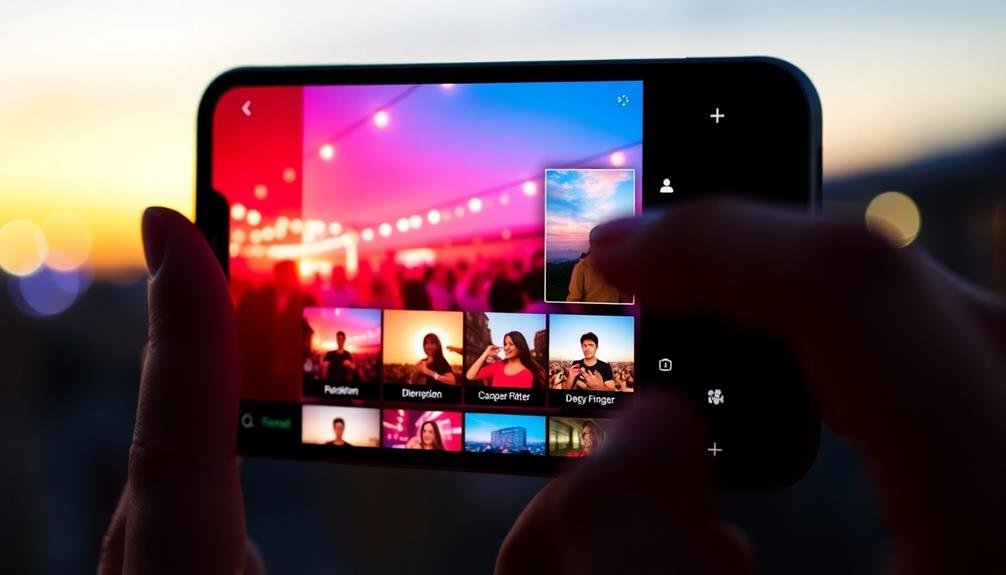
Grasping the basics of mobile editing filters is essential for enhancing your event photos. These digital tools allow you to adjust various aspects of your images, from color and contrast to lighting and texture. Most mobile editing apps offer a range of preset filters, each designed to create a specific mood or style.
You'll find filters that can brighten your photos, add a vintage look, or create a dramatic black-and-white effect. Some filters emphasize warm tones, while others cool down the overall color temperature. It's important to understand how each filter affects your image and choose one that complements the event's atmosphere.
Many apps also let you fine-tune filter intensity, giving you more control over the final result. You can adjust parameters like saturation, highlights, shadows, and sharpness to achieve the perfect balance.
Remember that filters aren't one-size-fits-all; what works for one photo mightn't suit another. Experiment with different options and learn how they interact with various lighting conditions and subjects.
Choosing the Right Filter App
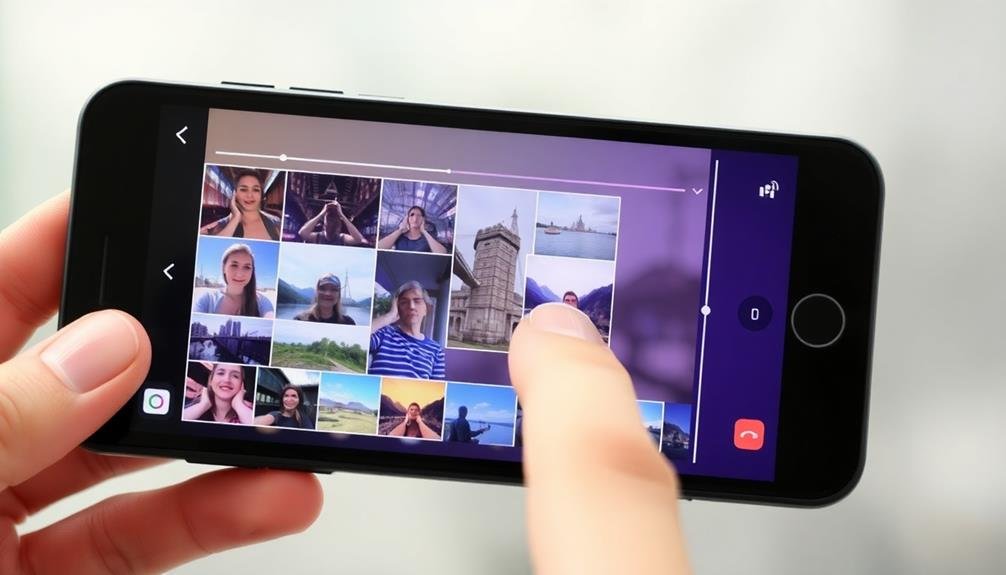
When selecting a filter app for your event photos, you'll find numerous popular options like VSCO, Snapseed, and Adobe Lightroom Mobile.
Consider each app's range of filters, ease of use, and additional editing tools to determine which best suits your needs.
It's also worth checking user reviews and trying free versions before committing to a paid app.
Popular Filter App Options
Steering through the sea of photo filter apps can be overwhelming, but choosing the right one can make a world of difference in your event photography. Among the most popular options, VSCO stands out for its film-like filters and advanced editing tools. It's perfect for creating a cohesive aesthetic across your event photos.
Snapseed, Google's free editing app, offers a wide range of filters and precise adjustment tools. You'll find it especially useful for fine-tuning details in your event shots.
For a more artistic touch, Prisma transforms your photos into stylized artworks using AI-powered filters.
If you're looking for Instagram-style filters, consider using Afterlight or Lightroom Mobile. Both apps provide a variety of presets and customizable options to enhance your event photos.
For quick edits on the go, VSCO Cam offers a streamlined interface with one-tap filters.
Don't overlook built-in editing tools on your smartphone. Both iOS and Android devices now come with robust photo editing capabilities, including filters that can instantly elevate your event photos without the need for additional apps.
Evaluating App Features
How do you navigate the vast array of features when choosing a filter app for your event photos? Start by considering your specific needs. Are you looking for basic color adjustments, or do you need advanced tools like selective editing and layering?
Evaluate the app's user interface; it should be intuitive and easy to navigate, especially when you're working on-the-go at events.
Look for apps that offer a wide range of filters and effects, but also allow for customization. You'll want the flexibility to fine-tune presets to match your event's ambiance.
Check if the app supports batch editing, which can save time when processing multiple photos from an event. Consider the app's export options, ensuring it can produce high-quality images suitable for various platforms.
Don't overlook the importance of regular updates and customer support. A well-maintained app with responsive developers can make a significant difference in your editing experience.
Vintage-Inspired Filters for Timeless Appeal
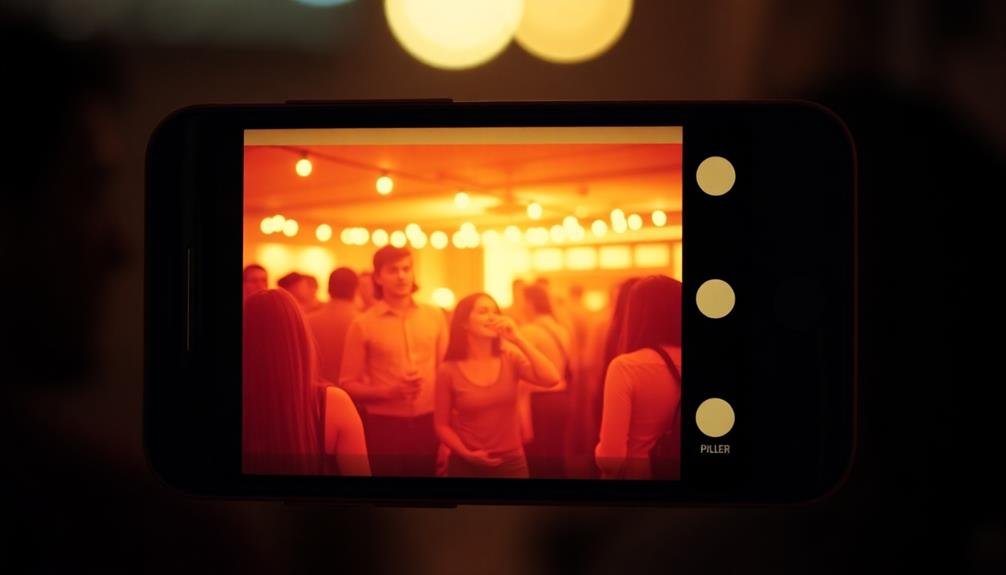
Vintage-inspired filters can give your event photos a timeless appeal that's hard to resist.
You'll find options like sepia-toned nostalgia, faded film looks, and classic black-and-white effects that transport your images to another era.
These filters can add depth and character to your photos, making them stand out in a sea of modern, high-contrast images.
Sepia-Toned Nostalgia
With sepia-toned nostalgia filters, you can transform your event photos into timeless memories. These filters add a warm, brownish tint to your images, evoking the look of vintage photographs from the early 20th century. By applying sepia tones, you'll create a sense of history and nostalgia, perfect for weddings, anniversaries, or any event with a classic theme.
To use sepia filters effectively, start by adjusting the intensity to suit your image. A subtle application can add a touch of warmth, while a stronger effect can transport your photo to a bygone era. Experiment with contrast and brightness to enhance the vintage feel. You'll find that sepia works particularly well with portraits and architectural shots.
Consider pairing sepia tones with vignetting for an authentic aged look. This combination mimics the appearance of old photographs, drawing attention to the center of the image.
For added authenticity, try incorporating film grain or slight blur effects. These touches can make your digital photos feel like genuine antiques.
Faded Film Look
While sepia tones offer a classic vintage look, the faded film aesthetic brings a different kind of nostalgia to your event photos. This filter mimics the appearance of old, slightly degraded film, creating a dreamy, wistful atmosphere.
You'll notice muted colors, soft contrasts, and subtle light leaks that add character to your images. To achieve this look, adjust your photo's saturation and contrast. Lower the saturation slightly to create that faded color palette, and reduce contrast for a softer overall appearance.
Experiment with adding a slight vignette to draw focus to the center of the image. Many mobile editing apps offer preset faded film filters, but you can also fine-tune these effects manually.
The faded film look works particularly well for outdoor event photos, especially those with natural light. It can transform a modern setting into something that feels timeless and nostalgic.
Use this filter to give wedding photos a romantic, ethereal quality or to add a touch of whimsy to birthday party snapshots. Remember, the key is subtlety – you want to enhance the mood without overpowering the original image.
Black-And-White Classic Appeal
Black and white photography never goes out of style. When you're editing event photos on your mobile device, don't overlook the timeless appeal of monochrome filters.
These classic effects can transform ordinary shots into striking, dramatic images that capture the essence of your event.
To achieve a black-and-white look, start by adjusting the contrast and brightness. Increase the contrast to create more definition between light and dark areas, and fine-tune the brightness to enhance details.
Next, experiment with grain settings to add texture and depth, mimicking the look of traditional film photography.
Consider using selective color techniques to highlight specific elements while keeping the rest of the image in black and white. This can draw attention to key features or create a unique artistic effect.
Don't forget to play with shadows and highlights to emphasize the mood and atmosphere of your event photos.
Dramatic Black and White Conversions
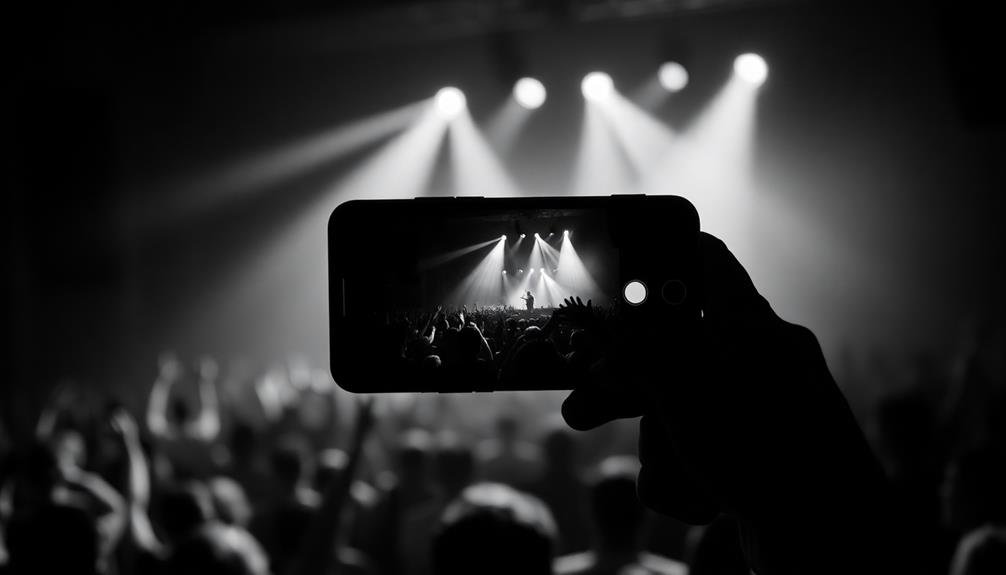
Frequently, photographers turn to dramatic black and white conversions to add a timeless and artistic flair to their event photos. This technique can transform ordinary shots into striking images that captivate viewers. You'll find that increasing contrast, adjusting highlights and shadows, and fine-tuning tonal ranges can create powerful, moody compositions.
To achieve dramatic black and white conversions, you'll want to experiment with various mobile editing tools. Start by boosting contrast to emphasize the difference between light and dark areas. Then, adjust the highlights and shadows to bring out details in both bright and dark regions. Don't forget to fine-tune the midtones for a balanced look.
Here's a quick guide to dramatic black and white conversion techniques:
| Technique | Purpose | Effect |
|---|---|---|
| High Contrast | Emphasize differences | Bold, striking look |
| Selective Darkening | Direct viewer's focus | Dramatic mood |
| Grain Addition | Add texture | Gritty, film-like feel |
| Vignetting | Frame subject | Draws eye to center |
| Clarity Boost | Enhance details | Crisp, defined edges |
Vibrant Color Pop Filters
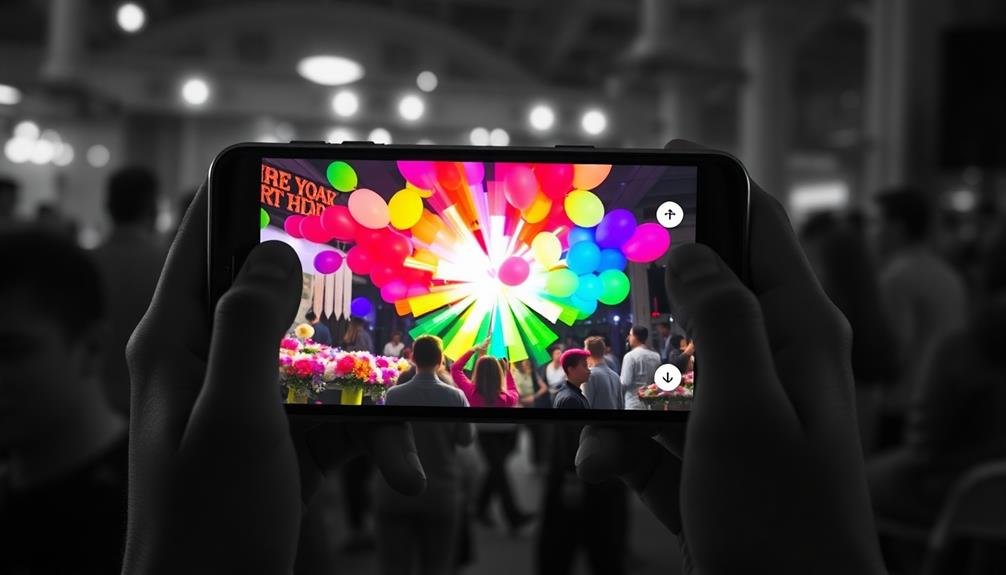
Vibrant color pop filters offer a dynamic way to make your event photos stand out. These filters intensify specific colors in your images, creating a bold and eye-catching effect that can transform ordinary snapshots into striking visual narratives. By selectively enhancing certain hues, you'll draw attention to key elements in your photos, whether it's the vibrant decor at a wedding or the colorful costumes at a festival.
To effectively use color pop filters, consider the following techniques:
- Isolate a single color to create a focal point, like a red dress against a muted background.
- Enhance complementary colors to create a harmonious yet striking contrast.
- Boost natural elements like blue skies or green foliage to add depth and vibrancy.
- Amplify warm tones to create a sunset-like glow, perfect for golden hour shots.
When applying these filters, be mindful of maintaining a balance between enhancement and authenticity. Overuse can lead to unrealistic results, so adjust the intensity to suit your desired aesthetic.
Experiment with different color combinations to find the perfect balance that captures the essence of your event while creating visually compelling images that will leave a lasting impression on your audience.
Soft and Dreamy Atmosphere Effects
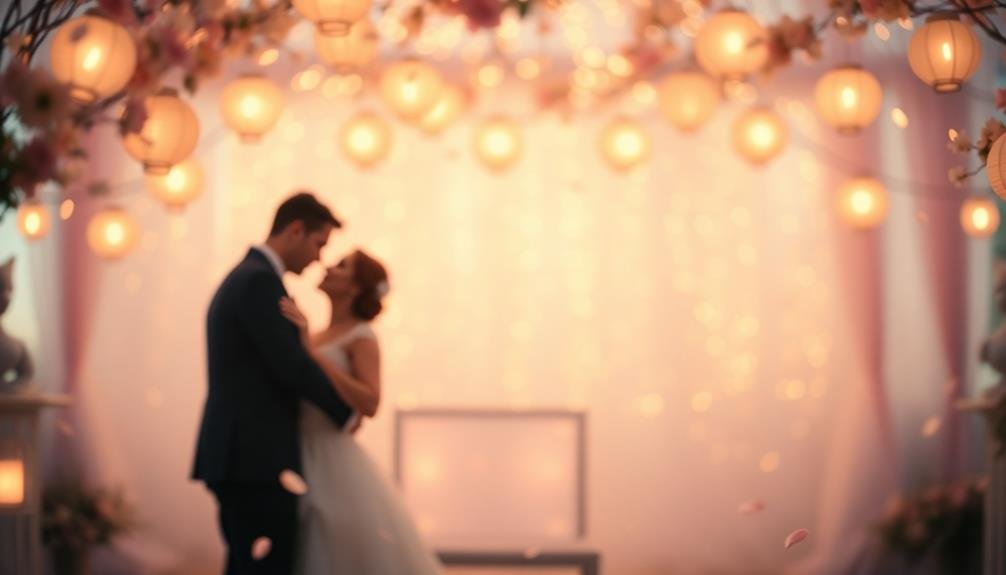
Soft and dreamy atmosphere effects can transform your event photos into ethereal works of art. These filters add a gentle, romantic quality to your images, perfect for weddings, outdoor gatherings, or any event with a whimsical vibe. You'll find various options to create this look, from subtle haze effects to dreamy light leaks.
Start by adjusting the overall softness of your image. Most editing apps offer a "blur" or "smoothing" tool that can gently soften harsh lines and details.
Next, experiment with lowering the contrast and slightly increasing the exposure to create a light, airy feel. Many apps also provide preset filters designed for this effect, often labeled as "dreamy," "ethereal," or "romantic."
To enhance the dreamy atmosphere, try adding a subtle vignette or light leak effect. These tools can create a soft glow around the edges of your photo or add ethereal streaks of light.
Don't overdo it – the key is to maintain a delicate balance. Finally, consider adjusting the color temperature slightly towards warmer tones for a more romantic feel.
With these techniques, you'll create enchanting event photos that capture the magical atmosphere of the moment.
Film Emulation for Nostalgic Looks
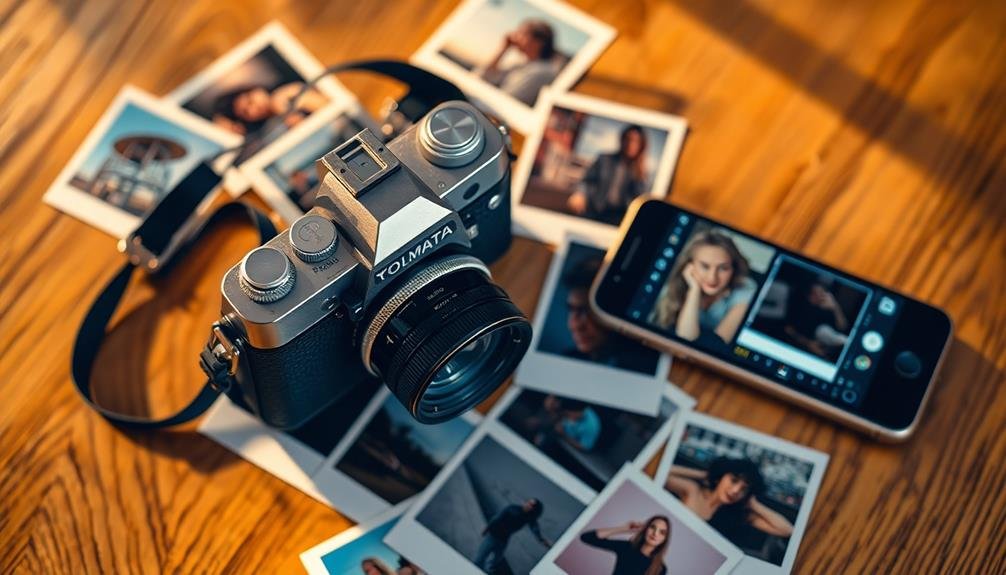
While soft and dreamy filters create a whimsical atmosphere, film emulation effects can transport your event photos to a different era entirely.
These filters mimic the look of classic film stocks, adding a nostalgic touch to your digital images. You'll find various film emulation presets in popular mobile editing apps, each replicating specific film brands and types.
To achieve an authentic vintage look, consider adjusting your camera settings before shooting. Use a warmer white balance and slightly underexpose your images to enhance the film effect.
When editing, pay attention to color grading, grain, and contrast to match your chosen film style.
Here are four classic film looks you can emulate:
- Kodachrome's vibrant colors and high contrast
- Fujifilm's soft, pastel-like tones
- Ilford's rich black and white grain
- Polaroid's washed-out, dreamy aesthetic
Experiment with different film emulations to find the perfect match for your event's mood.
Remember, subtlety is key – avoid overdoing the effect, as it may detract from the authenticity of your photos.
Creative Double Exposure Techniques
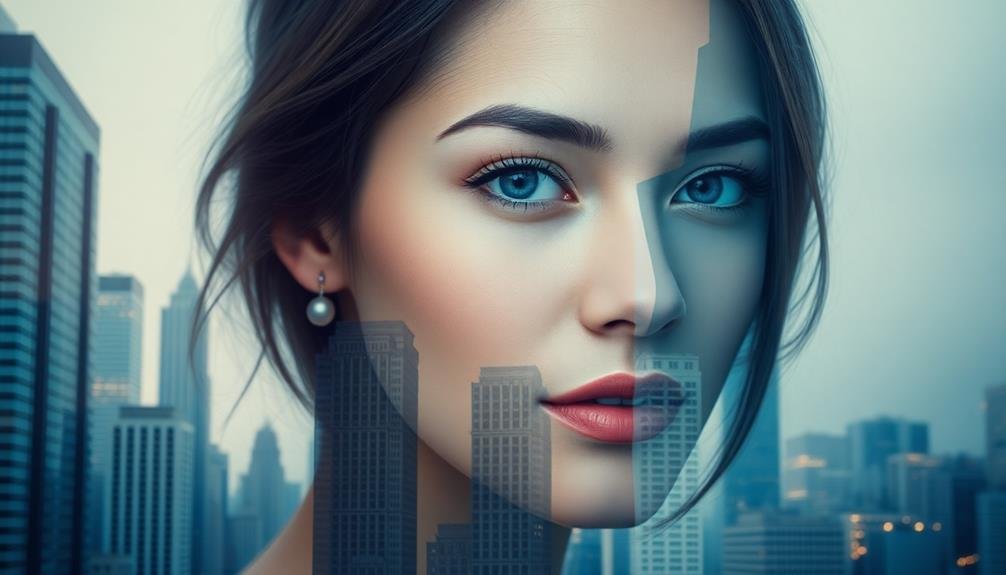
You can create stunning double exposure effects by seamlessly blending two scenes in your event photos.
This technique allows you to enhance the mood and atmosphere, giving your images a dreamlike quality.
Try layering textures and patterns over portraits or landscapes to add depth and visual interest to your event photography.
Blend Scenes Seamlessly
With creative double exposure techniques, you can blend scenes seamlessly to create stunning event photos. This method allows you to merge two or more images, combining elements from different shots to tell a compelling visual story.
By layering images, you'll add depth and intrigue to your event photography, making each photo a unique work of art.
To blend scenes seamlessly, start by selecting complementary images that share similar tones or themes. Use your mobile editing app's double exposure or layering feature to overlay the images, adjusting opacity and blending modes to achieve the desired effect.
Experiment with different combinations to find the perfect balance between your chosen scenes.
Here are four ideas to inspire your double exposure creativity:
- Merge a portrait with architectural details from the event venue
- Blend candid moments with close-ups of decorative elements
- Combine wide-angle crowd shots with intimate detail images
- Layer action shots with scenic backdrops for a dynamic composition
Enhance Mood and Atmosphere
Creative double exposure techniques offer powerful tools for enhancing the mood and atmosphere of your event photos. By layering two or more images, you can create a surreal, dreamlike quality that captures the essence of the occasion.
Start by selecting a base image that represents the main subject or focal point of your event. Then, choose a secondary image that complements or contrasts with the first, such as textures, landscapes, or abstract patterns.
Use your mobile editing app to blend these images, adjusting opacity and blending modes to achieve the desired effect. Experiment with different combinations to evoke specific emotions or themes. For example, overlay a starry sky on a wedding dance floor to create a romantic, celestial atmosphere.
Or, combine cityscapes with portraits to convey a sense of urban energy at a corporate event. Don't be afraid to push boundaries with unexpected pairings. Mix close-ups of event details with wide shots of the venue to add depth and context.
Play with color filters to further enhance the mood, using warm tones for intimate gatherings or cool hues for sleek, modern affairs. Remember, the goal is to create a visual story that resonates with the event's atmosphere and leaves a lasting impression on viewers.
Layer Textures and Patterns
Layering textures and patterns takes creative double exposure techniques to the next level. By combining multiple images, you'll create unique, eye-catching event photos that stand out from the crowd.
Start with a base image of your event subject, then overlay textures or patterns to add depth and visual interest. Experiment with opacity levels to find the perfect balance between the layers.
To create stunning layered effects, try these techniques:
- Blend a cityscape silhouette with a starry night sky for a dreamy, urban atmosphere.
- Overlay floral patterns on portraits to add a whimsical, botanical touch.
- Combine architectural elements with natural textures for a surreal, juxtaposed look.
- Layer geometric shapes over landscape shots to create abstract, modern compositions.
When choosing textures and patterns, consider the event's theme and mood. Use complementary colors and shapes to enhance the overall aesthetic.
Don't be afraid to mix and match unexpected elements – sometimes the most striking results come from unlikely combinations. Remember to adjust contrast and brightness to guarantee all layers are visible and balanced.
With practice, you'll develop a keen eye for layering textures and patterns, elevating your event photos to works of art.
Artistic Grain and Texture Overlays
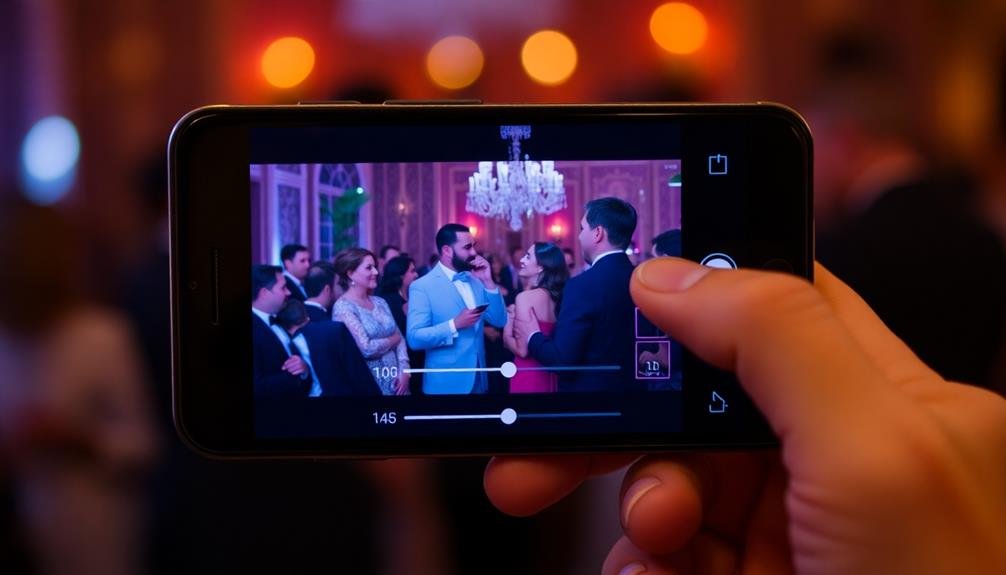
Texture and grain overlays add depth and character to your event photos, transforming them from ordinary snapshots into artistic masterpieces. These filters mimic the look of film photography, lending a timeless quality to digital images. You'll find various grain types, from fine and subtle to coarse and dramatic, allowing you to match the mood of your event.
Experiment with different textures to enhance the atmosphere of your photos. For outdoor events, try nature-inspired overlays like canvas or wood grain. For elegant affairs, take into account delicate paper or fabric textures. Urban events benefit from concrete or metal textures, adding an edgy feel.
Adjust the opacity of your grain and texture overlays to control their intensity. Subtle application can add a touch of nostalgia, while stronger effects create a bold, stylized look.
Don't forget to reflect upon the color of your overlay – sepia tones evoke a vintage feel, while cool blues can create a moody atmosphere.
Combine grain and texture overlays with other editing techniques for truly unique results. Layer them with color filters or use masking tools to apply selectively, highlighting specific areas of your event photos.
Selective Color for Visual Impact
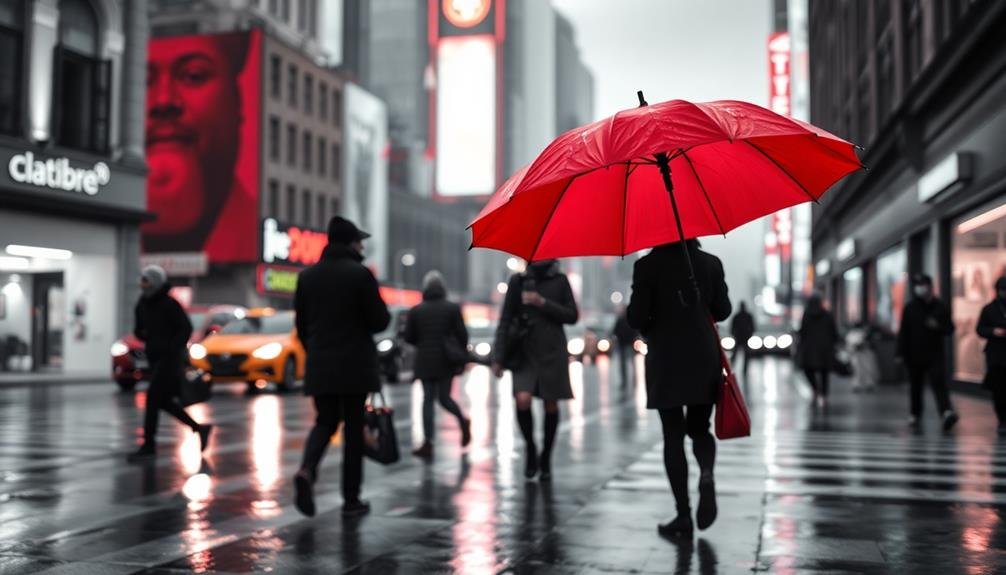
Selective color is a powerful tool that can instantly draw attention to specific elements in your event photos. By desaturating most of the image and leaving only certain areas in vibrant color, you'll create striking visual contrasts that captivate viewers. This technique works especially well for highlighting key aspects of an event, such as the bride's bouquet at a wedding or a corporate logo at a business function.
To effectively use selective color in your event photos, consider these impactful applications:
- Isolate a colorful cocktail against a monochrome bar scene
- Emphasize a speaker's bright tie amidst a sea of suits
- Highlight a birthday cake's candles in a dimly lit room
- Accentuate a bride's red shoes against her white dress
When applying selective color, don't overdo it. Choose one or two elements to keep in color, ensuring they're the focal points you want to emphasize.
Experiment with different color selections to find what works best for each photo. Remember, the goal is to guide the viewer's eye and create a memorable image that stands out from typical event photography.
With practice, you'll master this technique and add a unique flair to your event photo portfolio.
Custom Filter Creation and Saving
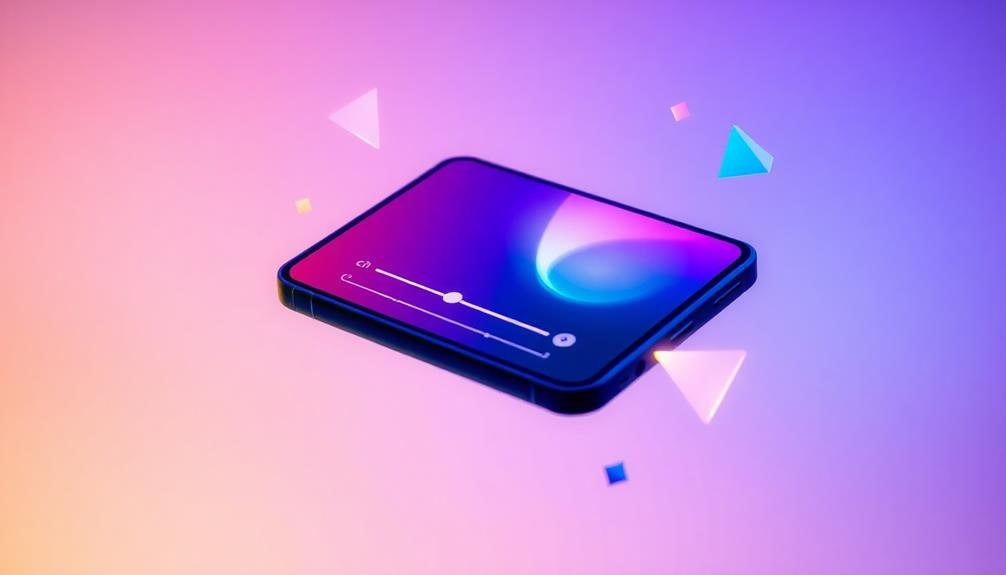
Creativity knows no bounds when it comes to custom filter creation in mobile photo editing apps. You can craft unique filters tailored to your event's specific atmosphere and style.
Start by adjusting basic elements like brightness, contrast, and saturation to achieve your desired look. Then, fine-tune color balance, highlights, and shadows to enhance the mood of your photos.
Experiment with advanced features like curves, grain, and vignettes to add depth and character to your images. Don't hesitate to layer multiple effects for a truly distinctive filter.
Once you've perfected your custom filter, save it for future use. This allows you to apply consistent editing across all your event photos with just a tap.
Many apps let you name and organize your custom filters, making it easy to build a personal library of go-to looks. You can even create filter sets for different types of events, such as weddings, concerts, or corporate gatherings.
Frequently Asked Questions
How Can I Apply Filters to Multiple Photos Simultaneously?
You can apply filters to multiple photos at once by using batch editing features in many photo editing apps. Select all the images you want to edit, choose a filter, and apply it simultaneously to save time.
Are There Filters Specifically Designed for Low-Light Event Photography?
Yes, there are filters designed for low-light event photography. You'll find options that enhance brightness, reduce noise, and improve contrast. Look for filters labeled "night mode," "low-light," or "event lighting" in your editing app's selection.
Can I Use Filters to Correct Common Issues Like Red-Eye?
Yes, you can use filters to correct red-eye. Many photo editing apps offer specific red-eye removal tools. They'll automatically detect and fix red-eye, or you can manually select the affected areas for correction.
How Do Filters Affect the File Size of My Event Photos?
Filters can increase your photo file sizes slightly, as they add data to the image. However, most mobile editing apps compress files, so you likely won't notice a significant difference in storage space used.
Are There Ethical Concerns When Using Heavy Filters on Event Photos?
You should consider ethical concerns when using heavy filters on event photos. They can misrepresent reality, set unrealistic expectations, and potentially mislead viewers. It's important to maintain authenticity and transparency, especially for professional or journalistic purposes.
In Summary
You've now got a toolbox full of mobile editing filters to take your event photos to the next level. Don't be afraid to experiment and find your unique style. Remember, the best filter enhances your image without overpowering it. With practice, you'll develop an eye for which filters work best for different situations. Keep exploring new apps and techniques, and you'll soon be creating stunning, share-worthy event photos that stand out from the crowd.

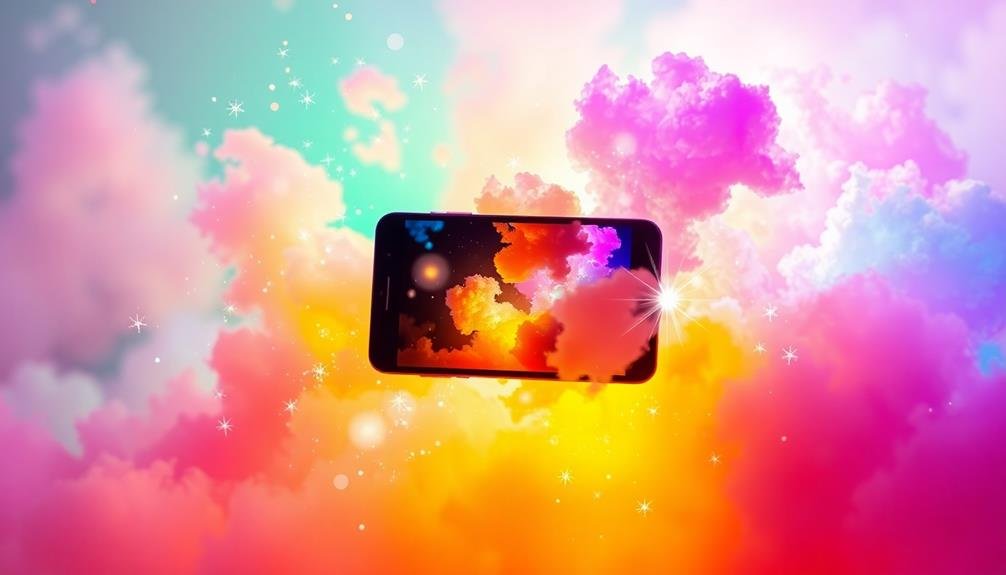



Leave a Reply